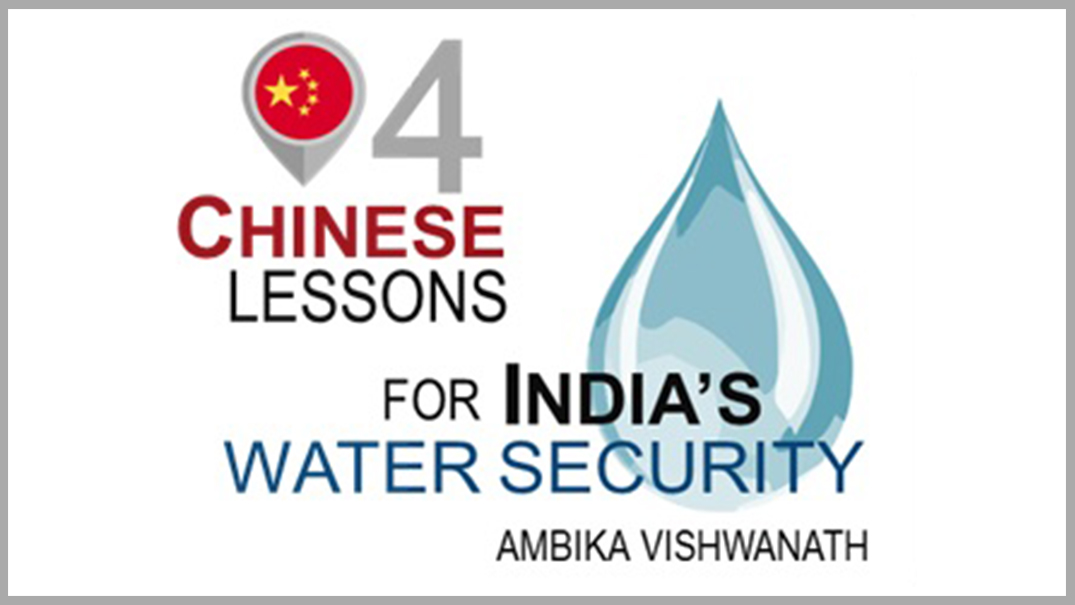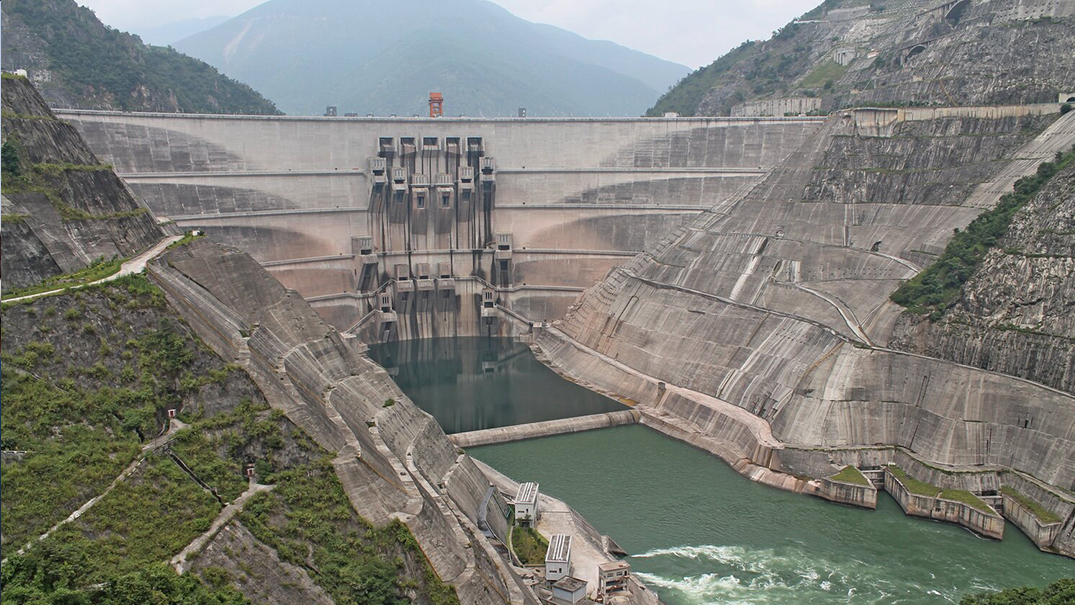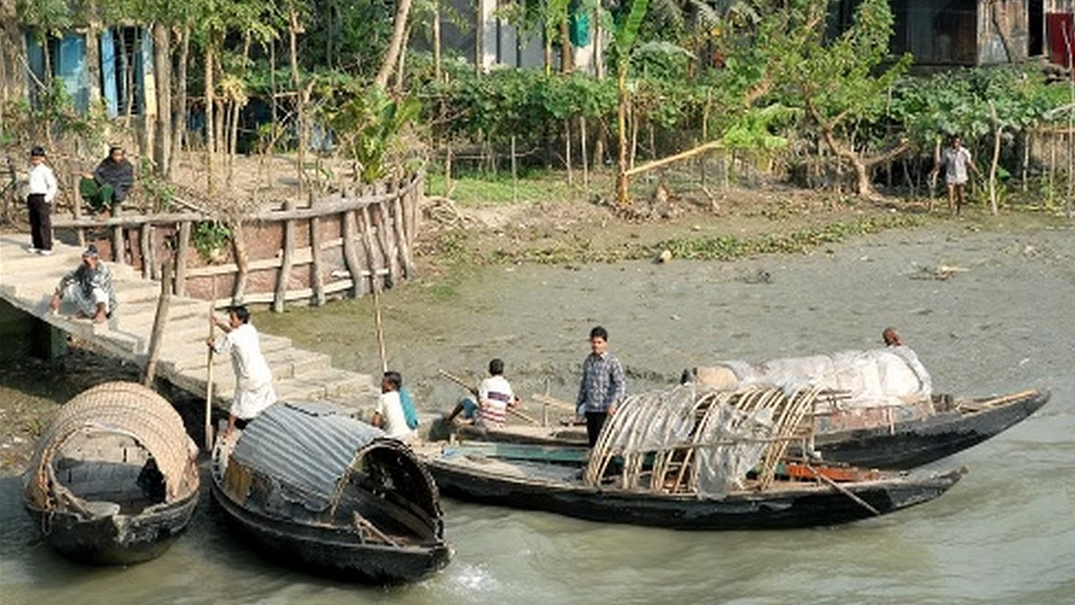India is waking up to its water crises. Kubernein’s Vishwanath shares Chinese lessons India can use to leap frog
- India faces serious water risks – 21 cities are expected to run out of water by the end of 2020 & 80% of groundwater has been withdrawn – yet, it still lacks efficient water management polices
- China having faced similar challenges and overcome some, can help India leapfrog through specific water laws, integrating local knowledge, building systems & deploying green finance
- Both countries have long roads ahead but it is clear, to achieve success and deliver on the Sustainable Development Goals, water security must be intertwined with development policies
In the quest for greater growth India has, till recently, ignored warning bells on the state of its water resources. Contrary to popular belief, India, for the most part, is not a water deficient country but lacks efficient water management practices. This is coupled with other issues including a low level of monitoring of resources, real time gathering of data and unchecked development.
“India has ignored warning bells on the state of its water resources…country lacks efficient water management”
Encouragingly, the conversation on water security is fast gaining traction. The 2016 report ‘A 21st Century Institutional Architecture for India’s Water Reforms’ recommended creation of a multi-disciplinary National Water Commission and acknowledged the need for a multidisciplinary approach to managing water. The establishment of the Jal Shakti Ministry and efforts to streamline bureaucracy for long term policy planning indicates a serious commitment from the government. The conversation and policies, however, continue to be largely focused on the supply side of the issue.
A broader thinking is required to encompass a balance between demand, growth and supply; urban, industrial, and agricultural needs; and plug the gaps between low technology use and high degree of waste.
“21 cities to run out of water by end of 2020”
In 2018, NITI Ayog, the governments’ research and policy making body, stated that over 600 million Indians face high to extreme water stress, where 21 cities are expected to run out of water by end of 2020. In many of the listed cities (including – Mumbai, Pune, Chennai, Delhi and Bangalore) surface water and rainwater are available in plenty. Yet, these cities experience an almost annual water crisis, reflecting a lack in efficient management, modern storage and harvesting practices.
“Gaps in data prevent adequate policy planning”
The Central Water Commission data shows that on an average over 80 percent of available groundwater has been withdrawn across the country. Gaps in data prevent adequate policy planning, in addition to other pressing issues that need to be tackled such as a slow approach to modernisation, status quo obstructionism, relentless growth and urbanisation.
Experiences and best practices from around the world, including Israel, the European Water Framework Directive amongst others, provide us with plenty of opportunity to learn from. Closer home, China has been experiencing several problems that are similar to what India is contending with today; high urban population density, growing demand and fast paced economic development that has seen serious air and water pollution challenges.
China has demonstrated considerable success in combating both its air and water pollution, with targeted regional visions for cities and a long-term macro strategy for the country. A study of their journey[1] would prove beneficial to the Indian context as we strive to find balance between our water management strategy, ambitious welfare scheme and aim of a $5 trillion economy by 2024.
China has shown success, here are 4 lessons
Below is a snapshot of 4 key lessons from China that India could use to leapfrog and achieve its water security goals.
1. Water Pollution Prevention and Control
Amongst the contributing factors to the poor state of water resources in India, especially in urban and peri-urban areas, are relentless urbanisation, over extraction of groundwater, destruction of natural green spaces such as marshlands, and a rise in water pollution. Several water bodies, including lakes and rivers, that were once lifelines of economic hubs in the country have been rendered unfit for consumption. Bangalore is a well-documented case in point here, and the Yamuna River in Delhi.
Having faced similar situation, China’s 2015 Action Plan which was subsequently made into law was the first of its kind to integrate efforts from the ground up, as well as across sectors and verticals, and set achievable mid and long-term goals. Here, surface and groundwater were not treated as two different entities, a thought process that India is still grappling with.
2. River Chief System
China’s River Chief system, a concept first introduced in Jiangsu, has enabled grassroots management of water bodies. Increasing the responsibility and accountability of local officials has seen marked improvement in the water quality in China. The river chiefs at the local level work closely with their community, thereby increasing transparency and promoting ownership at the residential level of a water resource.
In India too, subnational bodies such as the panchayats, municipalities, corporations and other non-governmental entities, can be brought into the larger water management conversation. Local knowledge and indigenous methods are oft-overlooked and are instrumental in taking forth a government agenda. The Swachh Bharat mission launched during Modi 1.0 employed a similar tactic with tangible results.
3. River Commissions
In India, most rivers are considered as parts of a sum, within state boundaries. The 1956 River Board Act was framed to develop inter-state river basins, yet, barring a few exceptions (such as the Ganga Rejuvenation and Tapi River Projects), we have not moved beyond state level management and use it to create river basin development bodies. By considering the river system as one unit flowing across state boundaries, we gain a more comprehensive understanding of the basin, thereby reducing the risk of conflict.
Here China’s Yangtze River Commission action plan makes for a good study. The plan balances exploitation and protection of the river and offers relevant concepts that could be adapted to several Indian Rivers, including the Brahmaputra, Narmada, Godavari, Cauvery and other heavily exploited and contentious rivers.
4. Green Financing of Water Infrastructure
Green financing of water infrastructure initiatives place onus and responsibility on high-value polluters by setting up water quality targets linked to economic incentives. This system was introduced in China to combat air pollution and more recently in its overall water security goals.
In parallel China has also invested in advanced technologies, such as the wastewater treatment projects to cover Shanghai aided by the World Bank, and innovative city planning through the Sponge Cities project. The launch of multi-stakeholder initiative, China Mega-City Water Fund, brings together everyone from local communities, knowledge partners and financiers.
India needs a similar green fund for water security, in tandem with nascent collaborations that are aimed at combating climate change. A greater push is also required from both government and private partners on investment in technology for monitoring, better engineered systems, and potential for radical re-use of water.
“It’s clear, water security must be intertwined with the goals of development to be successful”
While China’s gains are commendable and still have a long journey ahead, it is a good case study of success and failures; having had to deal with air and water pollution and impact on economic development a few years ahead of India. For both countries it is clear, to achieve the kind of success envisioned in the Sustainable Development Goals, water security must be intertwined with the goals of development policy including health security, poverty eradication, disaster risk reduction and urban resilience.
There are often synergies between achieving water security from the local to the national level and the debate on this has to be embedded in broader policy debate both domestic and foreign.
This article was originally published by CWR; China Water Risk.



